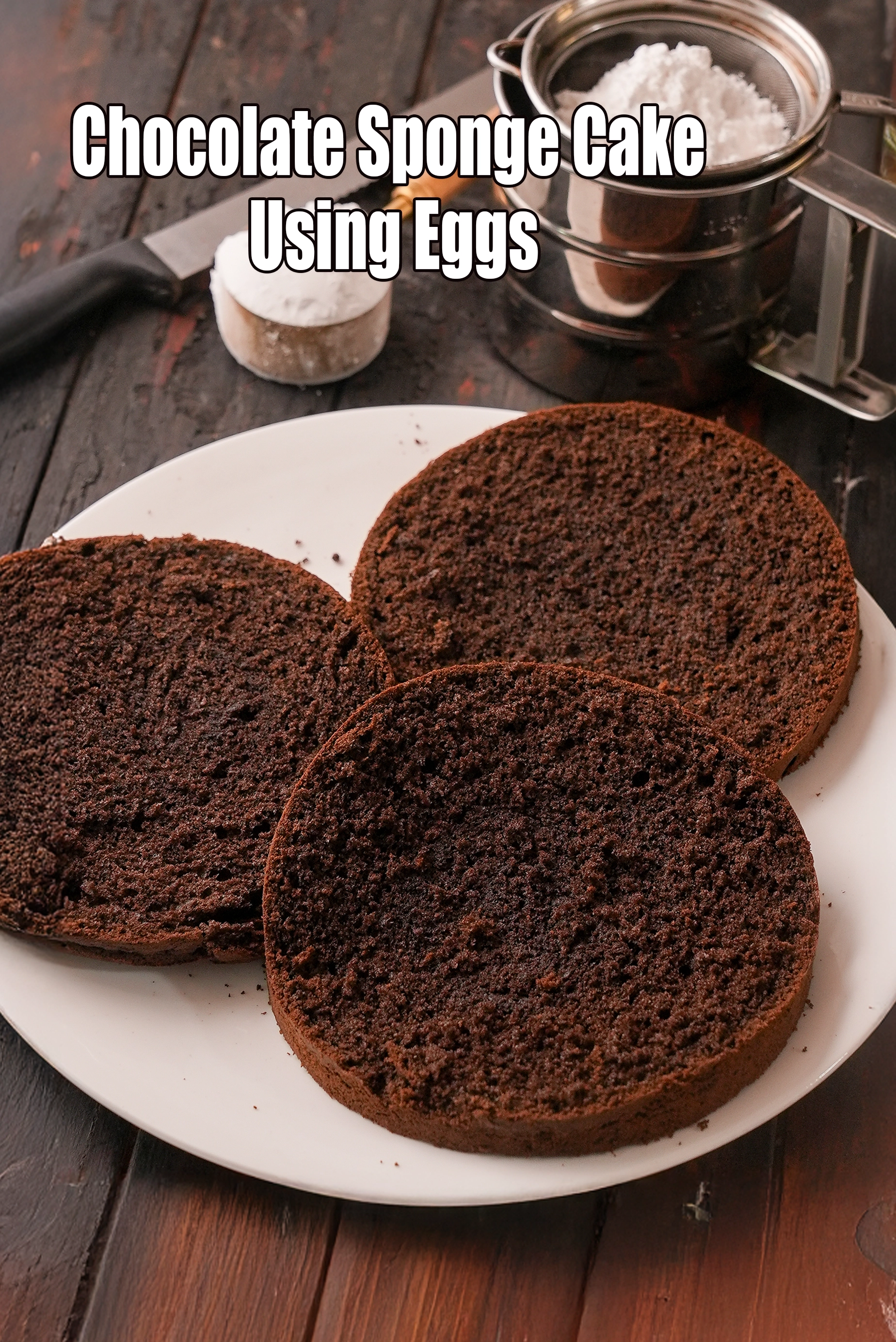You are here: Home> Course > Indian Desserts , Sweets > Cakes with Eggs > Cakes > Basic Sponge Cake
Basic Sponge Cake

Tarla Dalal
27 January, 2025

Table of Content
Oh, can’t imagine life without a basic sponge! Indeed, whether you want to make a simple cake, or an elaborate one for a special occasion, its success depends entirely on the Basic Sponge Cake.
Here is a basic sponge recipe, which uses eggs. Its softness, and the rich flavour of vanilla are very enjoyable, and you will find this sponge suitable for plenty of marvelous creations. You can try these out - Tiramisu , Cassata , Cardamom Orange Cake , Fresh Fruit Gateau , Gateau Citronella .
Basic Sponge Cake recipe - How to make Basic Sponge Cake
Tags
Preparation Time
15 Mins
Cooking Time
25 Mins
Total Time
40 Mins
Makes
1 cake
Ingredients
Main Ingredients
1 1/2 cups plain flour (maida)
1 1/2 tsp baking powder
3/4 cup butter (room temperature)
1 cup powdered sugar
3 egg
1 tsp vanilla essence
5 tbsp milk
Method
- Sieve the plain flour and baking powder in a deep bowl and keep aside.
- Cream the butter and sugar in a bowl, mix well using a spatula till smooth. Keep aside.
- Add the eggs, one at a time and mix gently with help of a spatula.
- Finally, add the plain flour mixture, vanilla essence and milk and fold gently using a spatula.
- Grease and dust a175 mm. (7") diameter cake tin and transfer the batter into it.
- Bake in a pre-heated oven at 200ºc (400ºf) for 30 minutes.
- Keep aside to cool slightly. Demould and use as required.
Basic Sponge Cake recipe with step by step photos
Nutrient values (Abbrv)per plate
| Energy | 424 cal |
| Protein | 7.4 g |
| Carbohydrates | 49.4 g |
| Fiber | 0.1 g |
| Fat | 21.7 g |
| Cholesterol | 55.3 mg |
| Sodium | 287.6 mg |
Click here to view Calories for Basic Sponge Cake
The Nutrient info is complete

Praniti
March 13, 2025, midnight
Can we add coffee to make a coffee cake in this cake?

Tarla Dalal
March 13, 2025, midnight
Hi Praniti, Yes you can add little coffee powder...

sanyogita
March 13, 2025, midnight
Hello ma''am...i finally tried this recipe today...lovely reciepy..my cake turned out really well..my kids loved the cake...i only had a couple of queries (1) my cake became a bit dry.(2) 3/4 cup butter means how much in gms(3) the cake crust was a bit hard n the cake had many cracks ..is there any way to avoid this so we can get a uniform flat top layer for the cake..thx

mumtaz ismail
March 13, 2025, midnight
excellent recipe. thanks a lot.

Hema
March 13, 2025, midnight
Hey ma''am I had a query that why chemicals are used in bakery cake, are those chemicals important to make perfect sponge cake?

Sharon
March 13, 2025, midnight

Tejashree
March 13, 2025, midnight
Hi ma''am I like your all recipes. only one doubt in this recipe is 1 cup=? grams?/ml? Thank you

henna
March 13, 2025, midnight
I want to try this recipe but I want to ask what can I use in place of eggs and what quantity ???

Tarla Dalal
March 13, 2025, midnight
We have lots of Eggless Sponge Cake recipes. Try https://www.tarladalal.com/Eggless-Sponge-Cake-108r

Seema
March 13, 2025, midnight
I tried eggless sponge cake it was great. Thanks alot. Just want to know if we double the quantities to make a bigger cake is it ok to do so. And what will be the baking time in that case.

Tarla Dalal
March 13, 2025, midnight
Hi Seema, We would not suggest to double it as you will need a very huge tin and baking time will def vary a lot. However you can try and see.

Anisha Ashokan
March 13, 2025, midnight
Hello, most recipes ask you to beat the egg well using a beater... don''t we need to beat the egg or just mixing it well is enough?

Tarla Dalal
March 13, 2025, midnight
Hi Anisha, No need but if you wish to, you can.

slambu
March 13, 2025, midnight

Bishwajeet Patra
March 13, 2025, midnight
Can i cook the same recipe in a Rice cooker?

Tarla Dalal
March 13, 2025, midnight
Hi Bishwajeet, we have not tried making it in the rice cooker.

Dhriti Patney
March 13, 2025, midnight
Mam if I have to make this same recipe of sponge cake without eggs what can I do.

Tarla Dalal
March 13, 2025, midnight
Try clicking here for a list of Eggless Sponge Cakes. http://www.tarladalal.com/RecipeSearch.aspx?rec=1&term=eggless sponge cake or http://www.tarladalal.com/Eggless-Vanilla-Sponge-Cake-Using-Curds-(-Cakes-and-Pastries-)-33309r Happy Cooking.

Sudha
March 13, 2025, midnight

Tarla Dalal
March 13, 2025, midnight
Hi Sudha , we are delighted you loved the Basic Sponge Cake recipe. Please keep posting your thoughts and feedback and review recipes you have loved. Happy Cooking.

Rutuja Sawant
March 13, 2025, midnight
Can we use vegetable oil instead of butter? If yes, what is the quantity for baking a small cake?

Tarla Dalal
March 13, 2025, midnight
Hi Rutuja, Try this below recipe http://www.tarladalal.com/Eggless-Vanilla--Cake-Using-Oil-(-Cakes-and-Pastries-)-33314r

Rutuja Sawant
March 13, 2025, midnight
Hi Tarlaji! Can aluminum foil which is greased and dusted be used for lining cakes? Or do you recommend using butter/parchment paper only?

Tarla Dalal
March 13, 2025, midnight
Hi Rutuja, We would not suggest to use that instead grease the tin with butter and plain flour.

Sneha bagri
March 13, 2025, midnight
The cake turned out perfectly soft. Although I added few drop soft vanilla essence and I fond the cake to be a little sweet for my taste. So next time I am going to reduce the sugar measurement a little.

Tarla Dalal
March 13, 2025, midnight
Thank you Sneha Bagri for your review... Sweetness always depends on person to person, so you can always reduce the sugar as per your taste... Do try more and more recipes and let us know how they turned out.... Happy Cooking !!!

sudha
March 13, 2025, midnight
It was a perfect cake. Thanks a ton

Tarla Dalal
March 13, 2025, midnight
Hi Sudha , we are delighted you loved the Basic Sponge Cake recipe.

Vidya Badrinath
March 13, 2025, midnight
Can we do the same receipe in microwave? If yes at what temperature and for how many minutes?

Tarla Dalal
March 13, 2025, midnight
Hi Vidya, you can use this below recipe to make the sponge in the microwave https://www.youtube.com/watch?v=D5S_U6_9hg4

CakenGifts.in
March 13, 2025, midnight
I must be pleased for sharing your ideas. Thank you for the good writes up. It?s a brilliant job.

Tarla Dalal
March 13, 2025, midnight
Really great hear such kind words from your side and happy to know your loved the write up''s. Happy Cooking!!!

Shobna
March 13, 2025, midnight
Finally I baked the basic sponge cake ?? But I think somewhere I did mistake cos my cake top layer was bit hard or crusty n while swallowing the cake felt bit dry ... dono what went wrong either with the batter or while baking ??

Tarla Dalal
March 13, 2025, midnight
Hi Shobna, Just follow the recipe exactly and bake in a middle shelf. Make sure the batter is not thick and of dropping consistency.

Foodie #596839
March 13, 2025, midnight
Gud

FoodieHash
March 13, 2025, midnight

madhavijata
March 13, 2025, midnight
I have tried this recipe for small cake and got very good fluffy cake. Good recipe.

letitia thomas
March 13, 2025, midnight
what does gms stand for?

Tarla Dalal
March 13, 2025, midnight
Stands for grams. Thanks for asking.

Kavita
March 13, 2025, midnight
Don''t we need to preheat the oven

Tarla Dalal
March 13, 2025, midnight
Hi Kavita, Yes you need to preheat the oven. We have one more recipe for sponge cake, here is the link http://www.tarladalal.com/Rich-Vanilla-Sponge-Cake-Using-Eggs-33918r. Do try the recipe and give us your feedback..

kenniceangle
March 13, 2025, midnight
This look ridiculously good.I absolutely love cake.Thanks to share your step by step cake recipe.

Tarla Dalal
March 13, 2025, midnight
Hi, thank you for your kind words.

Foodie #691195
March 13, 2025, midnight
Loved it

Sureshkumar Pursnani
March 13, 2025, midnight

Tarla Dalal
March 13, 2025, midnight
thanks for the feedback !!! keep reviewing recipes, articles you loved.

Nancy
March 13, 2025, midnight
Hello Tarla Ji, I''m a big fan of urs since childhood. As I''m just starting with this cake (never baked before) how much time and on what setting should I keep my microwave oven.

Tarla Dalal
March 13, 2025, midnight
Hello Nancy, thank you for your kind words. This recipe is an oven recipe and cannot be made in a microwave. You can refer to our microwave cake recipe if you wish to bake in your microwave.







-14169.webp)

















